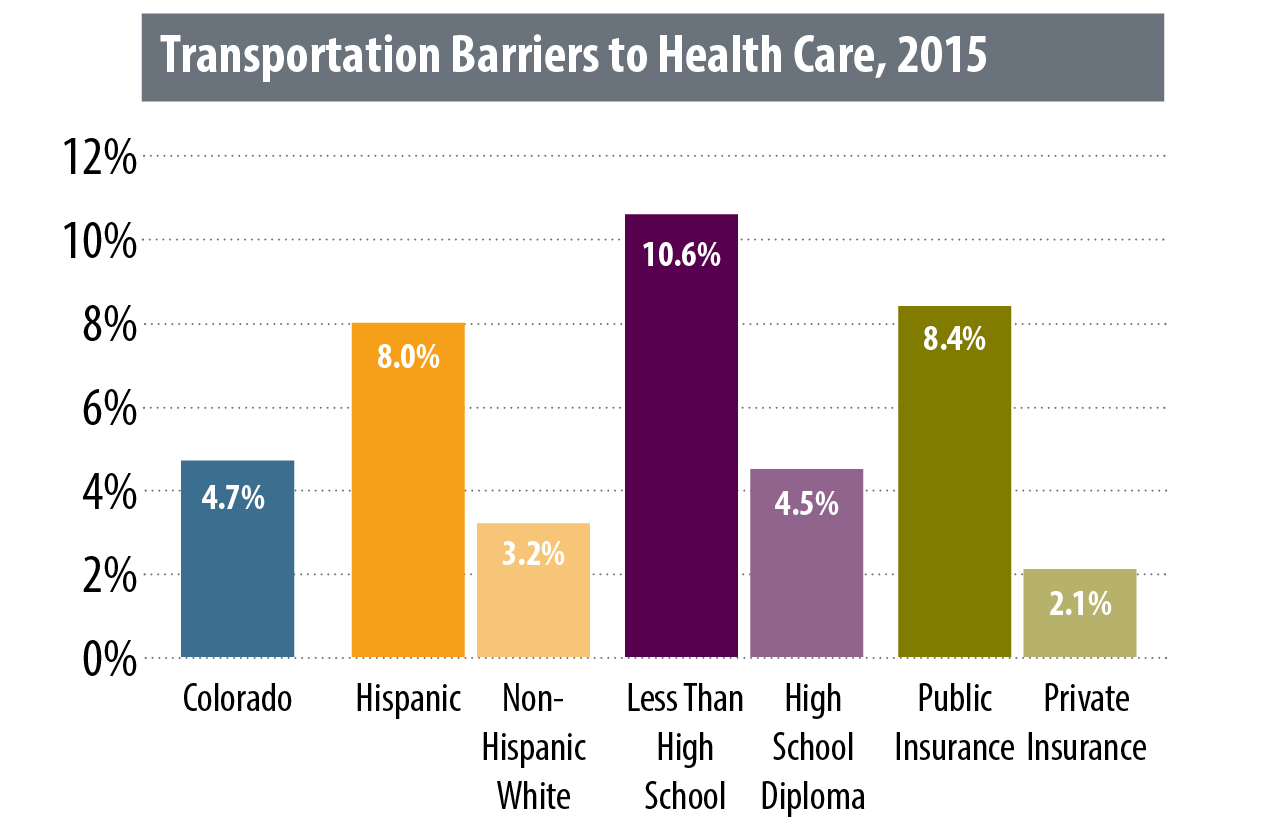Some Coloradans can’t afford health care. Some live in places without many doctors. And some pass up treatment because they have no way to get to their medical appointments.
A lack of transportation can be hazardous to a person’s health. In Colorado, Hispanics and people with lower incomes , less education and rural addresses tend to face transportation barriers that may impede access to care, according to the 2015 Colorado Health Access Survey (CHAS).
The Colorado Health Institute looked at CHAS results to determine the extent of the problem and whether there are regional and demographic disparities. The survey asked respondents the following question:
In the past year, was there a time you needed health care but you were you unable to find transportation to the doctor’s office or the doctor’s office was too far away?
We were surprised by the results. Only 4.7 percent of respondents answered “yes” to this question in 2015, up slightly from 4.4 percent in 2013. Put another way, the results suggest that a lack of transportation prevented fewer than one in 20 Coloradans — roughly 250,000 residents — from receiving needed care in the past year. While not an insignificant number, we expected it to be higher in a geographically large state with many rural areas.
That’s the good news. But access to transportation isn’t the same for everyone.
The problem was more widespread for Hispanics than for non-Hispanic whites. Eight percent of Hispanic Coloradans identified transportation as a barrier compared with just 3.2 percent of non-Hispanic Whites. As for education, 10.6 percent of those with less than a high school diploma cited transportation challenges compared with 4.5 percent of those who graduated from high school.
A person’s insurance type makes a difference too. Only 2.1 percent of privately insured Coloradans said they faced transportation barriers, compared with those who have public insurance (8.4 percent) or no insurance (8.3 percent).
Not surprisingly, geography also comes into play. Eight percent of respondents from rural northeast (Health Statistics Region 1) and rural southeast (Health Statistics Region 6) Colorado said they did not get health care due to trouble finding transportation to the doctor’s office. By contrast, only 1.8 percent of residents of Douglas County (Health Statistics Region 3) faced that barrier.
The state legislature has shown interest in the issue. Lawmakers this year passed a bipartisan bill (House Bill 16-1097) to license and support people who provide non-emergency transportation to Medicaid clients. This includes driving them to doctors’ offices and pharmacies — places that are crucial for preventive care and management of chronic conditions. The bill passed with the support of 99 of the legislature’s 100 members and was signed into law by Governor John Hickenlooper on May 20.
The CHAS data are just one way to look at transportation issues in health care. CHI is also conducting a drive-time analysis to see how long it takes Coloradans in each zip code to reach the nearest primary care doctor’s office. Look for more on this work in the near future.
And our “Better by Design” series explores connections between health and the built environment. Our last installment will focus on transportation.


